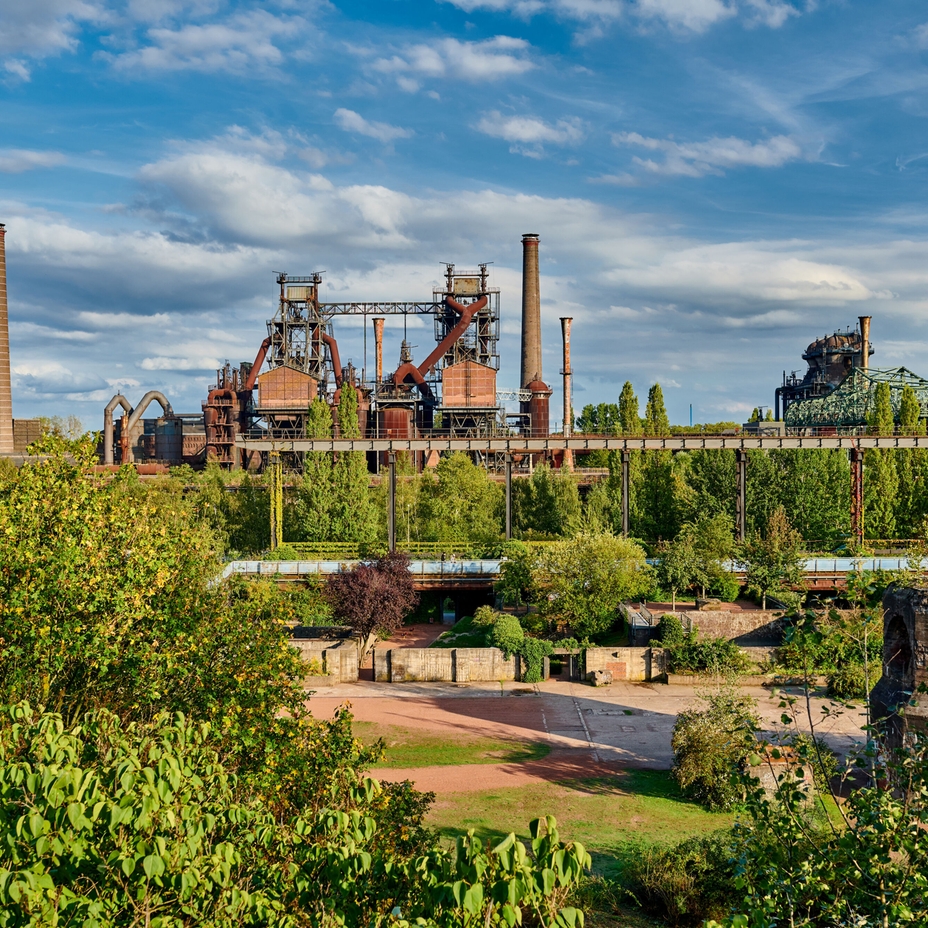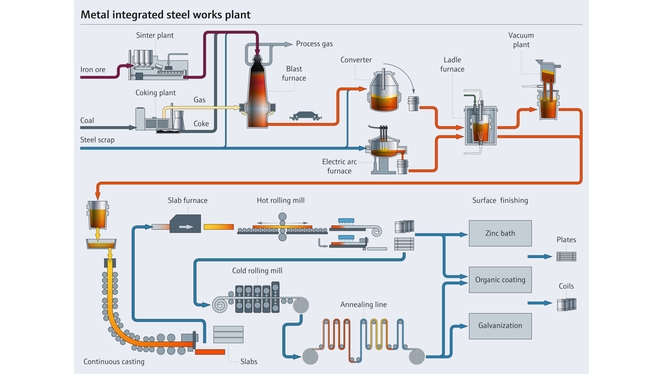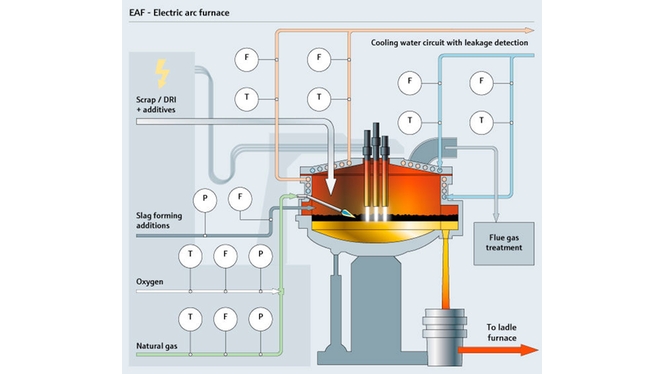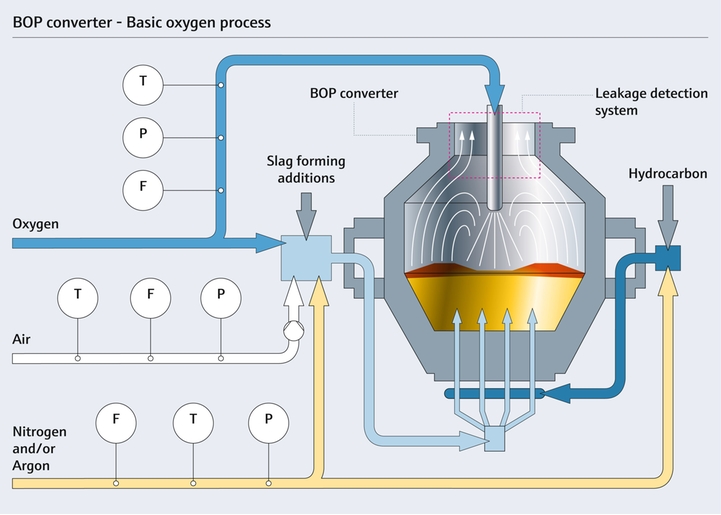Steel production is an energy intensive process. Therefore, it comes as no surprise that the environmental impact is significant, especially the CO2 emissions. But there is increasing pressure not just from the public or the government but also from customers and investors to reduce the carbon footprint. This forces the steel industry to come up with new ideas. Green Steel is the collective term for these innovative approaches.
Key facts
1.89 tons
of CO2 were produced per ton of crude steel cast according to the World Steel Association.

Carbon Capture and Utilization (CCU)
The gases from the blast furnace consist of CO2, CO and H2. To separate the CO2 various processes like adsorption and absorption are used. In Carbon Capture and Utilization accurate flow measurement is essential for process control, and regulatory processes. To make the process efficient and safe, parameters like flow, density and temperature need to be monitored.
Our expertise in the field
Using the Promass Q will deliver accurate measurements regardless of the physical properties of all gases in the line. Thanks to the Coriolis measurement technology it can simultaneously measure flow, density and temperature.

Direct reduction of iron ore
By using reducing gases oxygen can be removed from iron ore to produce iron sponge without melting the iron ore like in a blast furnace. While processing iron ore, syngas, a mixture of carbon monoxide and hydrogen, is often used as reducing gas. The iron content of this iron sponge is similar to that of pig iron reaching up to 95%. This makes it a perfect raw material for further processing in an electric arc furnace.
Our expertise in the field
In DRI processes, an energy-saving design is key for economic viability and to help reduce energy costs, such as increasing the amount of hot iron being transported. The Micropilot FMR67B measures level reliably in temperatures up to 450° Celsius.

Green energy sources
Melting down scrap metal and pig iron or iron sponge in an electric arc furnace consumes a lot of energy. Depending on the energy source the carbon footprint of the process can change dramatically. If energy is used that was produced with renewable resources, this so-called green energy can significantly lower the emissions of the whole process.
Our expertise in the field
Switching to renewable energy resources will mean for most steel production facilities a big investment. To ensure this change runs smoothly and efficiently, you need an accomplished partner. Endress+Hauser has more than 60 years of experience in the Power & Energy industry. We have both a portfolio dedicated to the power industry and the application knowledge to be able to consult you on your journey towards green energy.
Benefits
Making the idea of green steel a reality will be a challenge. Investments will have to be made to balance out environmental impact and economic viability. Endress+Hauser is your ideal partner on this journey as we have the application knowledge in the steel industry and also decades of experience in both the energy and gas sectors. Plus, we have a dedicated offering of products and services in these industries.
Key facts
95%
reduction of CO2 emissions by direct reduction with H2 and the use of green energy
Key facts
50%
reduction of carbon emissions must be achieved by the steel industry by 2050 to meet the world climate goals.
Key facts
14%
of the value of steel companies are at risk if they do not decrease their environmental impact according to a study by McKinsey.
What is Green Steel?
Three approaches have emerged to reduce CO2 emissions. Carbon capture means collecting the emissions from a blast furnace and then selling them to the chemical industry with which they can produce bioethanol or ammonia. A second option is the direct reduction of iron ore using H2 resulting in sponge iron that can be processed in either an electric arc furnace or in a converter to produce steel. Finally, using green energy sources decreases the carbon footprint of an electric arc furnace.
- Carbon capture and utilization (CCU)
- Direct reduction of iron ore (DRI)
- Green energy sources







